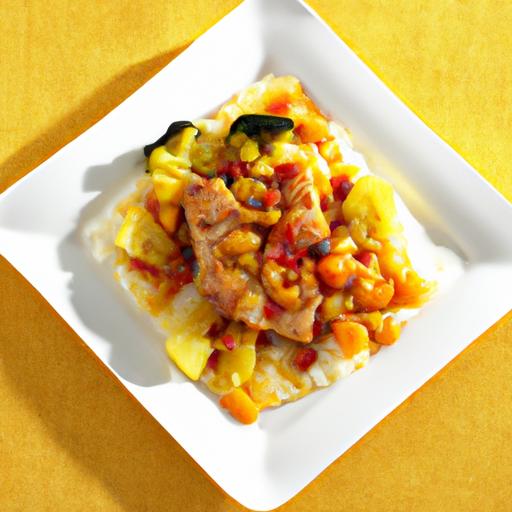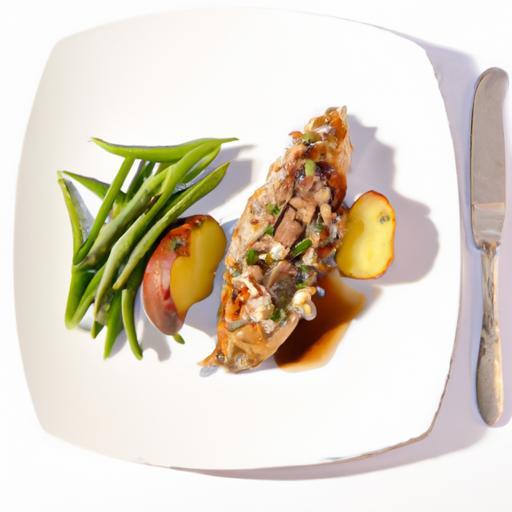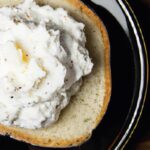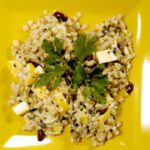In the hustle and bustle of daily life, leftovers often become unexpected culinary treasures-ready to be revived into delicious meals on a whim. But without proper storage, these tasty treasures can quickly turn into food safety hazards, turning your fridge into a forgotten time capsule of questionable edibles. Enter the art and science of “freezing smart”: a set of savvy strategies designed to keep your leftovers fresh, flavorful, and safe for another round at the dinner table. Whether you’re a meal-prep pro or a casual cook, mastering these top tips for safely storing leftovers will not only reduce waste but also ensure every bite is as delightful as the first. Get ready to unlock the freezer’s full potential with practical advice that’s both smart and simple-because great meals deserve an encore, not an expiration date.
Freeze Smart: Top Tips for Safely Storing Leftovers
Choosing the perfect containers, mastering portion control, and employing the right cooling and thawing techniques are essential steps in ensuring your leftovers remain fresh, flavorful, and safe. Whether you’re preserving a hearty stew or a delicate casserole, adopting these strategies will help you freeze smart and enjoy your meals just as deliciously as the day they were cooked.
Prep and Cook Time
Prep Time: 10 minutes
Cook Time: N/A (storage-focused tips)
Yield
Varies based on portion size and storage containers used.
Difficulty Level
Easy
Ingredients
- Microwave-safe airtight containers or glass freezer-safe jars
- Plastic freezer bags with zip-lock seals
- Permanent marker for labeling dates and contents
- Ice bath setup (large bowl filled with ice and water)
Instructions
- Select containers that are airtight and freezer-safe. Opt for glass or BPA-free plastic containers with secure lids to prevent freezer burn and maintain flavor integrity.
- Portion your leftovers into individual servings before freezing. This controls portions, prevents waste, and makes thawing quick and easy-only take out what you need.
- Cool leftovers completely before freezing. Use an ice bath to rapidly drop the temperature of soups, stews, or sauces, preserving delicate flavors and food safety.
- Label containers clearly with contents and freezing date using a permanent marker to keep track and consume within recommended storage times.
- Thaw leftovers safely either overnight in the refrigerator or using the defrost function on your microwave, ensuring even thawing and avoiding bacterial growth.
Chef’s Notes
- For liquids, leave an inch of headspace in containers to allow for expansion during freezing.
- Vacuum-sealing dramatically extends freshness but is optional; airtight containers work well for everyday use.
- Freeze sauces separately if possible, as they tend to freeze and thaw more evenly this way.
- To maintain texture and flavor, avoid refreezing leftovers once thawed.
Serving Suggestions
Garnish reheated leftovers with fresh herbs like parsley or cilantro for brightness. Serve alongside warm crusty bread or a side salad for a complete and tempting meal. Layer reheated stews over creamy mashed potatoes or fluffy rice to elevate simplicity to comfort dining.
| Nutrient | Per Serving |
|---|---|
| Calories | Varies |
| Protein | Varies |
| Carbohydrates | Varies |
| Fat | Varies |
Explore more kitchen storage hacks to complement your leftover freezing strategy.
For further food safety guidelines, visit the USDA Food Safety and Inspection Service.

Q&A
Q&A: Freeze Smart – Top Tips for Safely Storing Leftovers
Q1: Why is freezing leftovers a smart choice?
A1: Freezing leftovers locks in freshness, flavor, and nutrients, extending their life and helping you reduce food waste. Plus, it saves time on future meals by keeping delicious dishes ready to reheat.
Q2: What’s the golden rule before freezing leftovers?
A2: Cool your leftovers completely before freezing! Hot food can raise the freezer’s temperature, risking freezer burn and bacterial growth. Aim to chill leftovers in the fridge for no more than two hours before freezing.
Q3: How do I package leftovers to keep them tasty?
A3: Use airtight containers or heavy-duty freezer bags to guard against moisture loss and freezer burn. For extra protection, wrap dishes in plastic wrap or foil before placing them in containers.
Q4: Can all types of leftovers be frozen safely?
A4: Most cooked meats, soups, stews, and casseroles freeze beautifully. Avoid freezing foods high in water content that get mushy, like lettuce, or creamy dishes with mayo-based dressings, which can separate upon thawing.
Q5: How long can I keep leftovers frozen?
A5: Typically, frozen leftovers stay safe for 2-6 months. For best taste, label your containers with the freezing date and try to eat them within three months for peak flavor.
Q6: What’s the safest way to thaw frozen leftovers?
A6: Thaw leftovers in the fridge overnight, use the defrost setting on your microwave, or submerge sealed bags in cold water. Avoid thawing at room temperature to prevent bacteria growth.
Q7: Can I refreeze leftovers after thawing?
A7: It’s best to avoid refreezing leftovers that have fully thawed, as repeated freezing and thawing can compromise safety and quality. Only refreeze if the food was thawed safely in the fridge and hasn’t been left out.
Q8: Any pro tips to avoid freezer burn?
A8: Remove as much air as possible from packaging, use freezer-safe wrap, and keep your freezer at a consistent 0°F (-18°C). Using portion-sized containers helps minimize exposure when you open them.
Freeze smart, save money, and savor every bite-because good food deserves a second chance!
In Retrospect
As you tuck today’s delicious creations away for another day, remember that freezing is more than just pressing pause-it’s about preserving flavor, freshness, and nutrients with care. By mastering these smart storage tips, you’re not only saving meals but also minimizing waste and maximizing convenience. So next time you face a fridge overflowing with leftovers, freeze smart, freeze safe, and let your culinary efforts shine again-one perfectly preserved bite at a time. Happy freezing!








